Aside from the obvious fender pun, the name Leo Fender isn’t often mentioned in gearhead circles.
But if you’re not familiar with the man, you’re most assuredly familiar with the products made by his Fender Electric Instrument Company—a series of iconic electric guitars that altered the course of both music and pop culture.
So…what do Fender guitars have to do with cars?
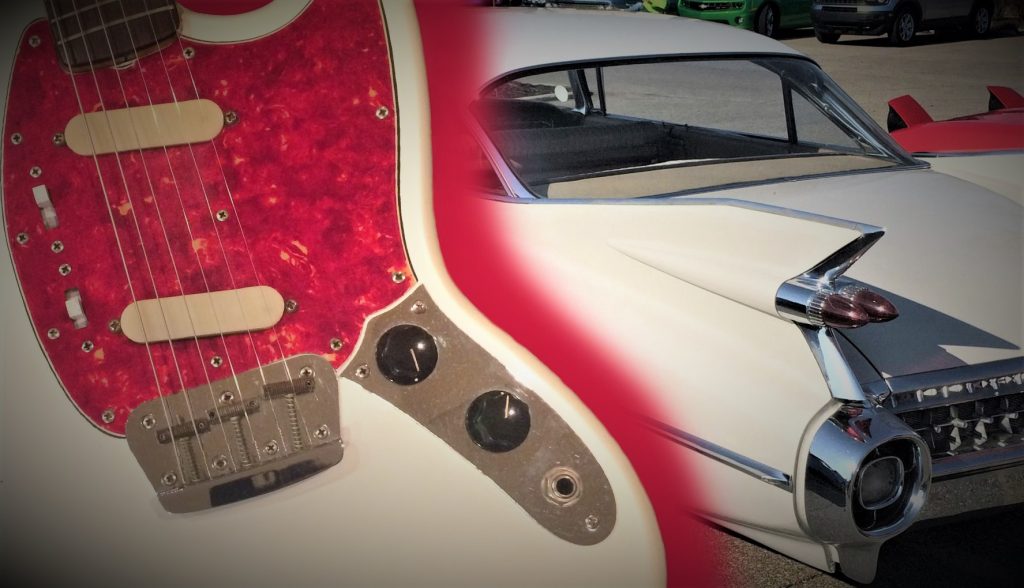
Well, quite a bit actually. And that’s particularly evident when you look at Fender’s early years from the 1950s through the 1960s. After all, Fender’s company was based in Fullerton, California, which put it smack-dab in the middle of the SoCal hotrodding scene that erupted after World War II.
That said, let’s take a brief look at some of the more interesting automotive influences that helped shape the path of a music legend.
“Ugly” Bridges, Chrome Pickups & Ashtrays
When discussing the overlap between automotive design and Fender guitars, a good place to start might be with the bridge and pickup covers on Fender’s earliest models—starting with the Broadcaster that debuted in late 1950.
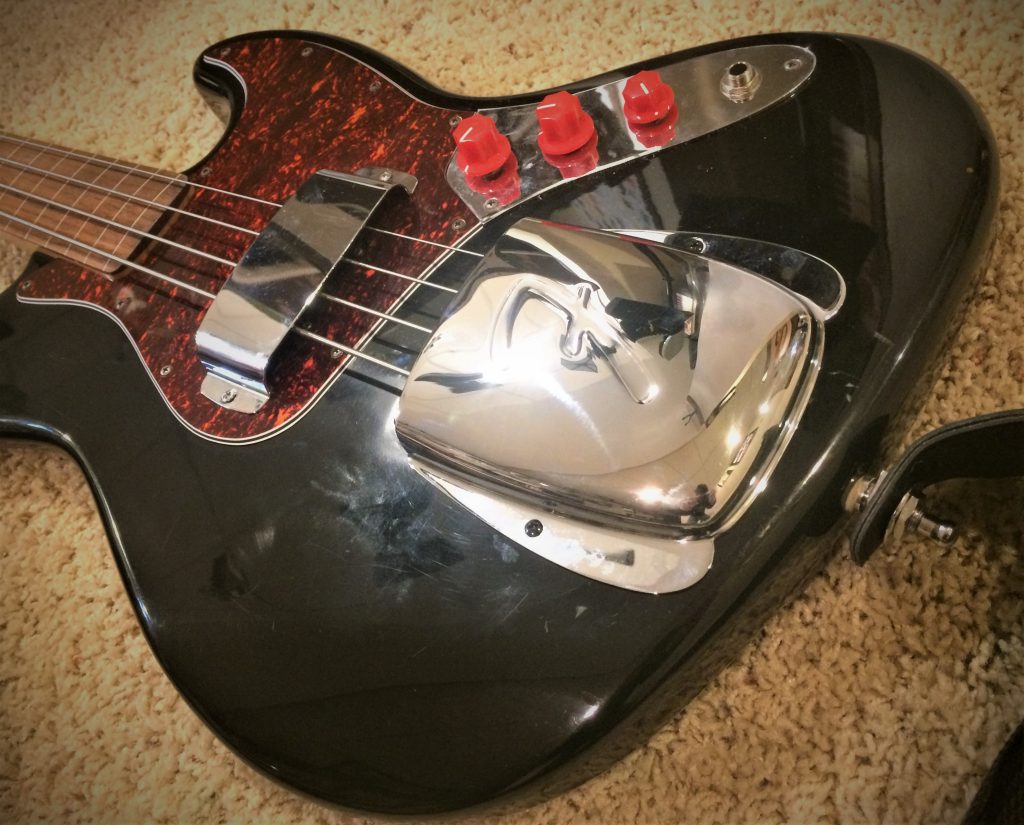
Though the covers are said to serve a few purposes, like RF shielding and electrical grounding, another popular opinion is that Leo Fender thought that his pickups and bridges didn’t look elegant enough when compared to the refined jazz archtops of the era.
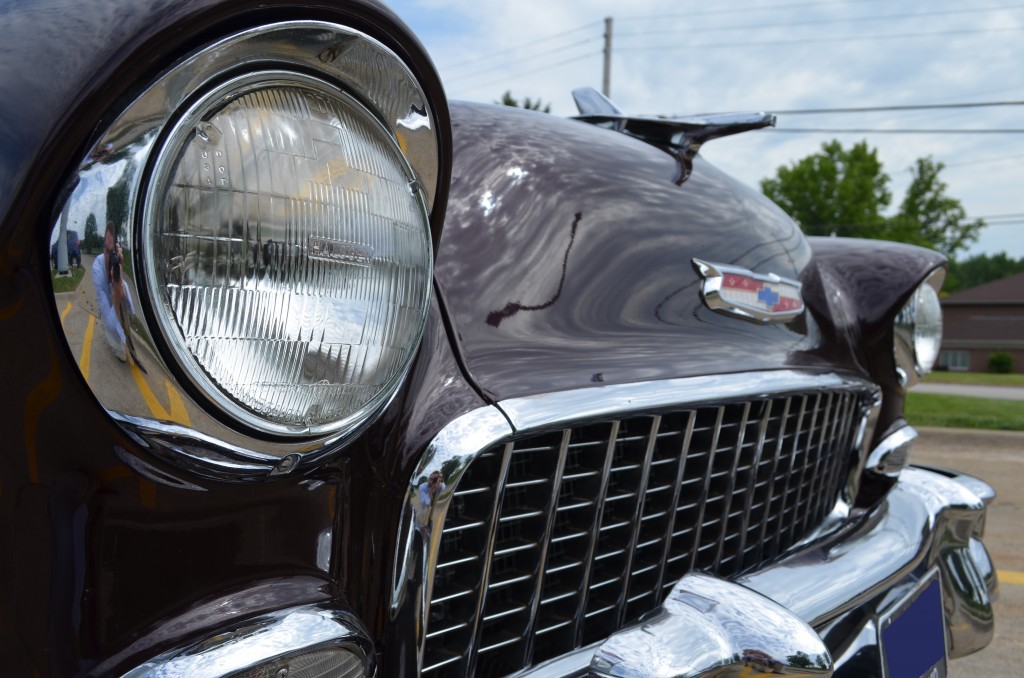
The solution was to conceal them behind large chrome covers, much like the chrome-bedecked cars of the 1950s.
Propelled by the automotive industry, chrome was the de rigueur styling accent at that time, so it’s no accident that Fender adopted the tactic too.
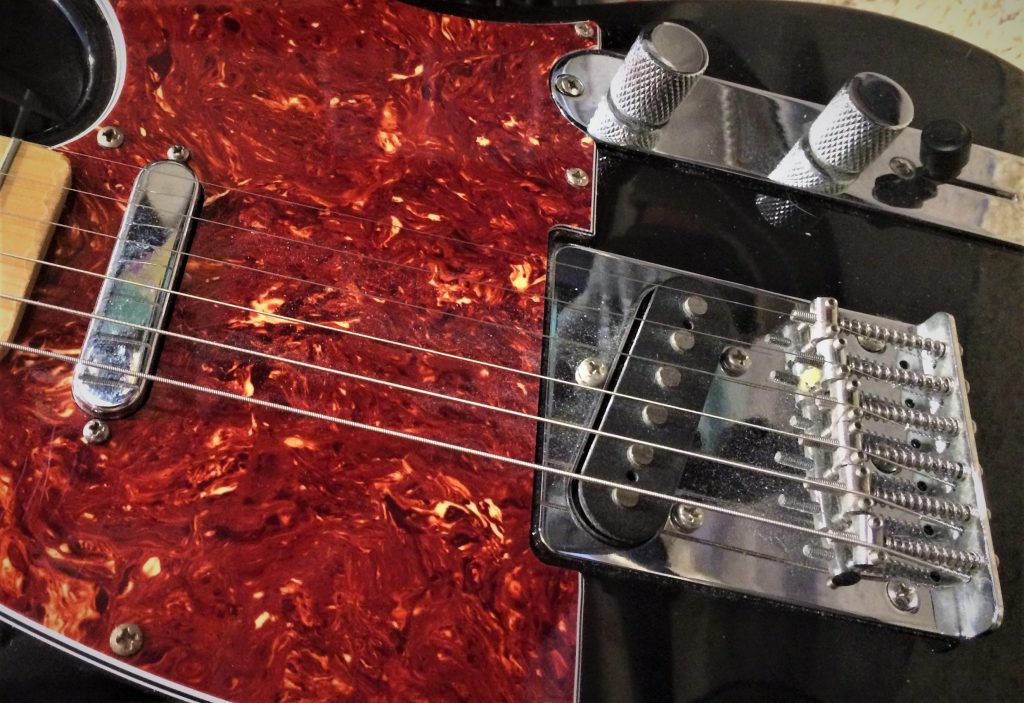
Problem was, those covers were bulky and often made the guitars difficult to play, so musicians simply removed them to expose the bridges and pickups underneath anyway.
Those early bridge covers quickly earned the nickname “ashtrays,” as they were repurposed into a more practical application. (Fender eventually realized the covers were problematic and stopped installing them altogether.)
Custom Colors (& a Stripe)

As the Fender guitar lineup expanded into the 1960s, the company began offering a broader palette of custom colors and finishes, perhaps due to the widening spectrum of colors seen on the streets of Southern California.
And to find those colors, Fender looked to Detroit.
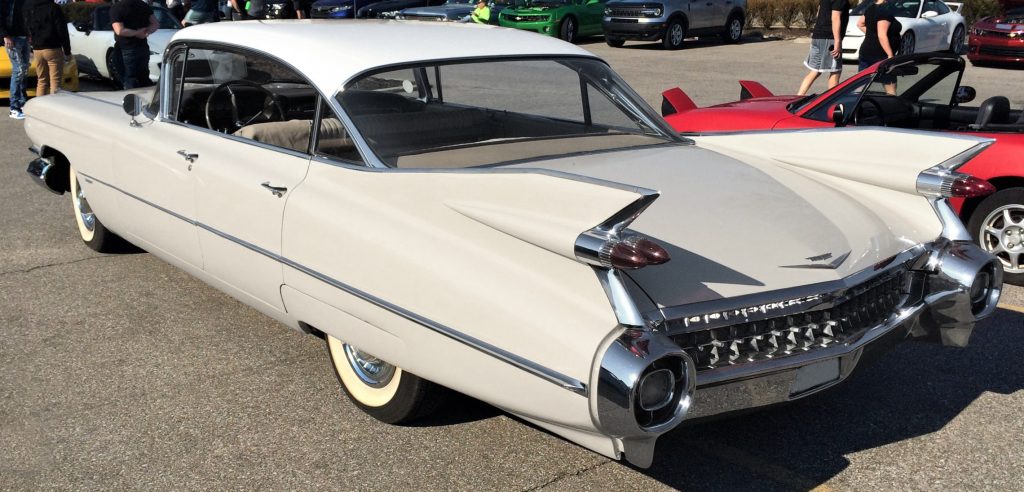
Shades like Foam Green, Fiesta Red, and Olympic White were pulled right off the Ford and GM showroom floors and added to the Fender catalog of custom finishes. And it wasn’t just the colors and names—Fender contracted with major automotive coating manufacturers like DuPont and PPG (Ditzler) to provide the paint.
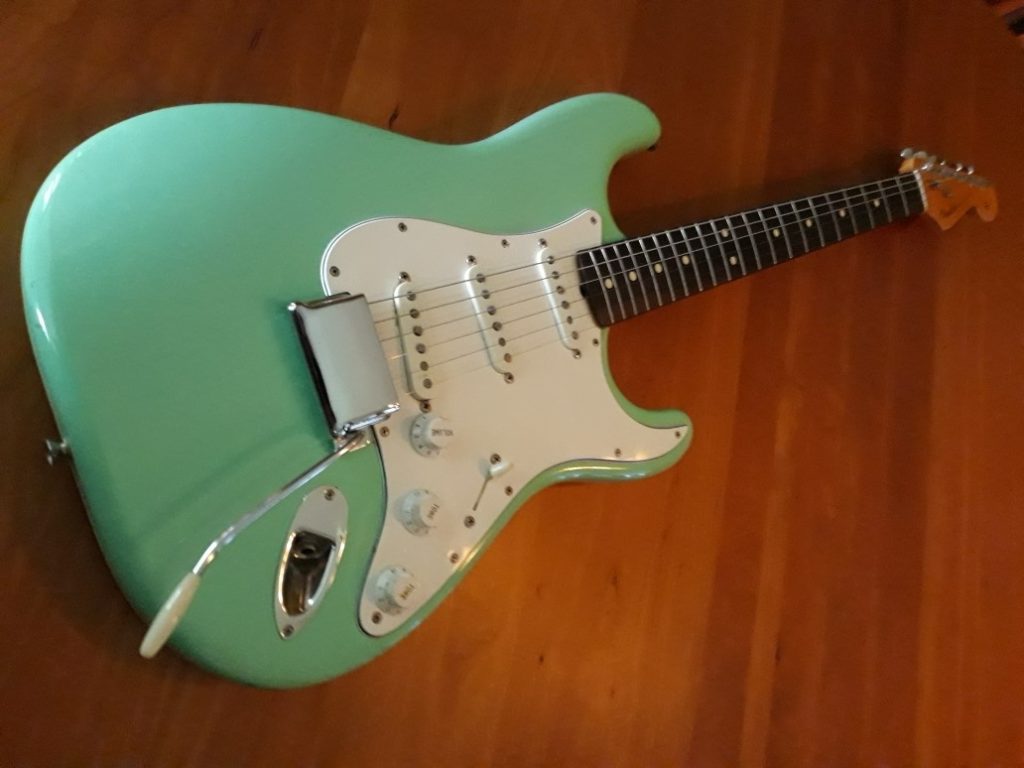
The automotive inspiration didn’t end with paint, either.
As the muscle car craze grew in the late 1960s, Fender followed suit with “Competition” versions of its Mustang guitar (more on that one in a sec). The Competition package was essentially a unique paint shade and a racing stripe decal across the guitar’s upper body contour, there was a matching painted headstock option too.
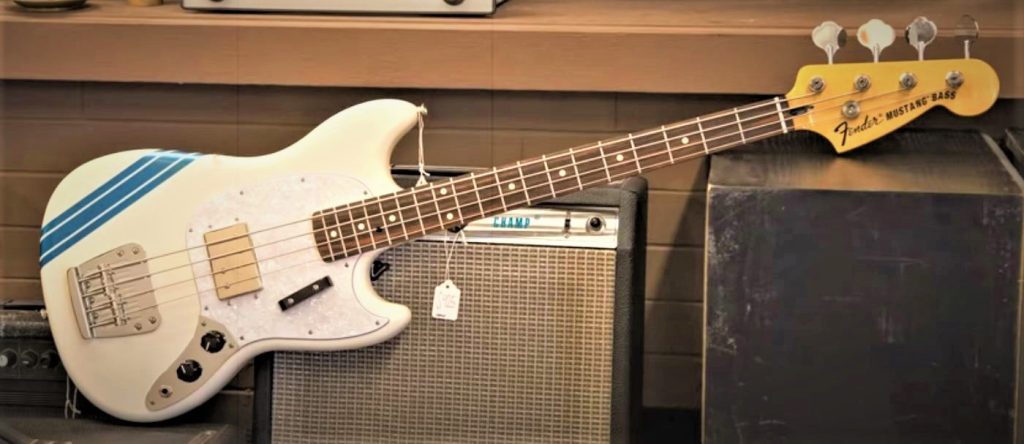
What’s in a (Ford) Name?
It’s perhaps more than a coincidence that, after Ford showed off its new Mustang ponycar in the spring of 1964, Fender’s own “Mustang” guitar would follow later that same year.
That coincidence is amplified (pun intended) when you consider that the Fender Mustang was marketed as a youth/student level guitar. And what better way to appeal to teenagers than to name your product after the hottest new car on the block?
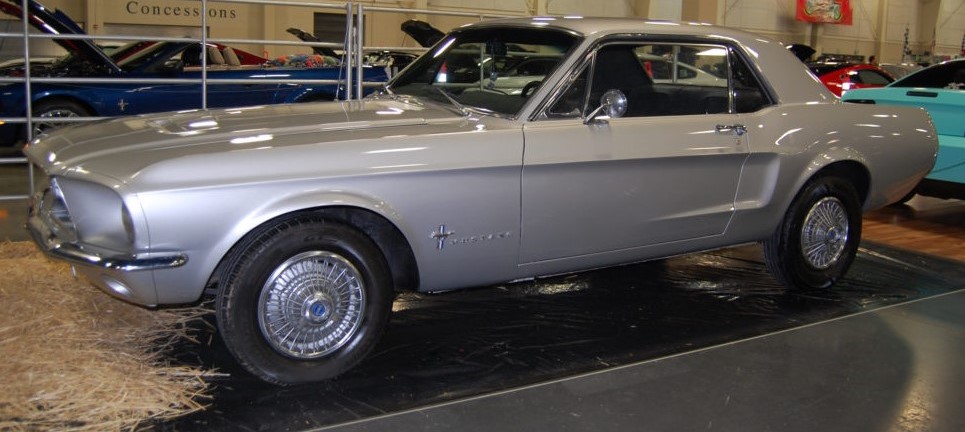
Fender didn’t stop there. A few years later, it pulled another name out of Ford’s notebook: the Bronco. It too was a student model that was often sold with an accompanying Bronco amplifier. (All of Fender’s student models, the Mustang, Bronco, and Musicmaster, were eventually phased out by the Bullet series starting in the early 1980s.)

Was the Mustang/Bronco thing a coincidence? Maybe.
But if you’re still not convinced Fender had an eye on Dearborn, there was also a short-lived and super-limited production Fender Maverick, which was essentially a parts bin special made from a handful of Fender’s low-selling guitars. (Both the guitar and the car were introduced in 1969, no less.)
Perhaps rival guitar manufacturer Gibson got into the name-borrowing act too, when it released the Firebird and Thunderbird—two guitars designed by famous automotive coachbuilder Raymond Dietrich.
Driving the Future
While nowadays the Fender company is clearly able to set its own trends, it’s fun to look back on the guitar manufacturer’s early automotive inspiration. And it’s even more interesting to see where those roots have stretched—take Volkswagen’s Beetle Fender Edition from a few years back as an example.
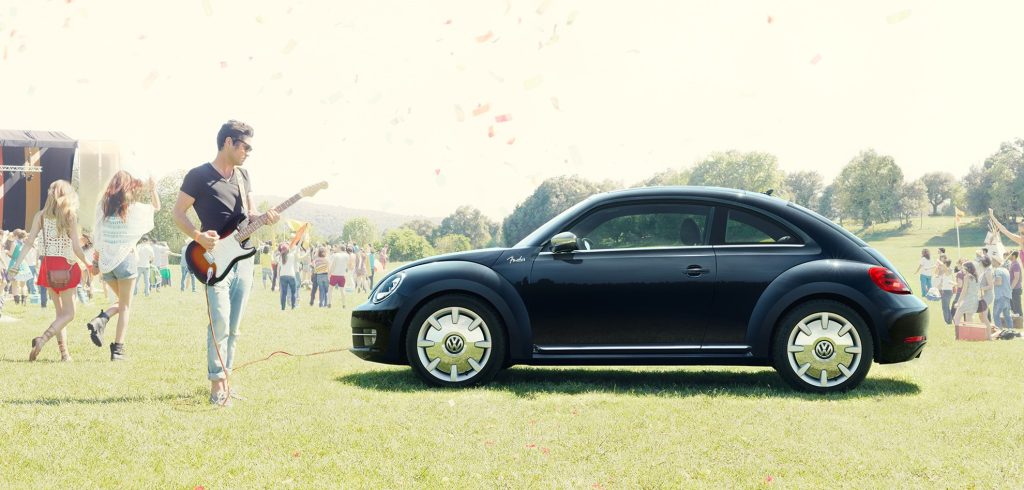
It’s also worth pointing out that, after he sold his eponymous business in the 1960s, Leo Fender continued his influence on the electric guitar, first with the Music Man company, then later founding G&L Musical Instruments (the “L” stood for Leo).
So perhaps it’s fitting that G&L would eventually release a “Detroit Muscle” series of guitars that resurrected some of Mopar’s famous high-visibility colors from the 1960s, like Sublime Green and Plum Crazy.
***
Regardless of how these paths interweave in the future, the overlap of Fender Guitars and the automotive industry is a fascinating subplot in both their respective histories.

Comments